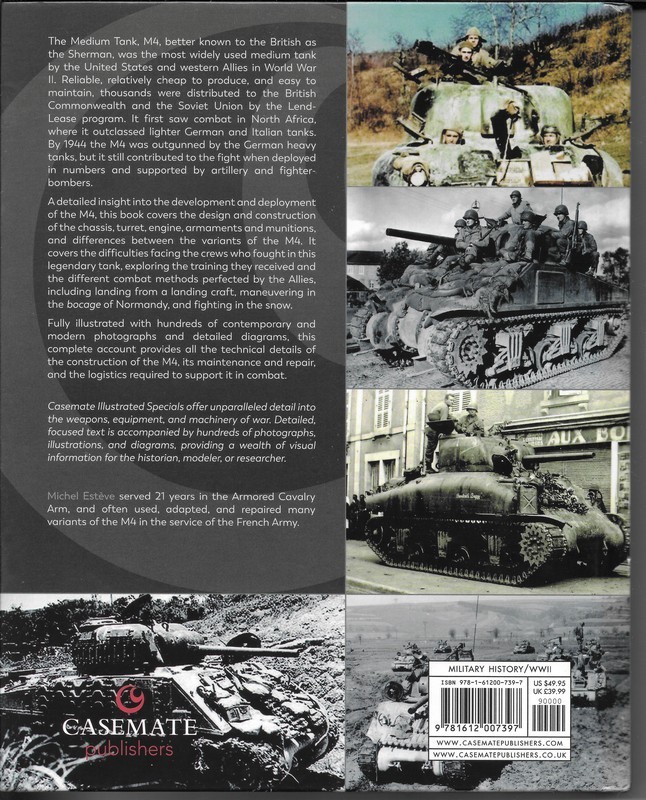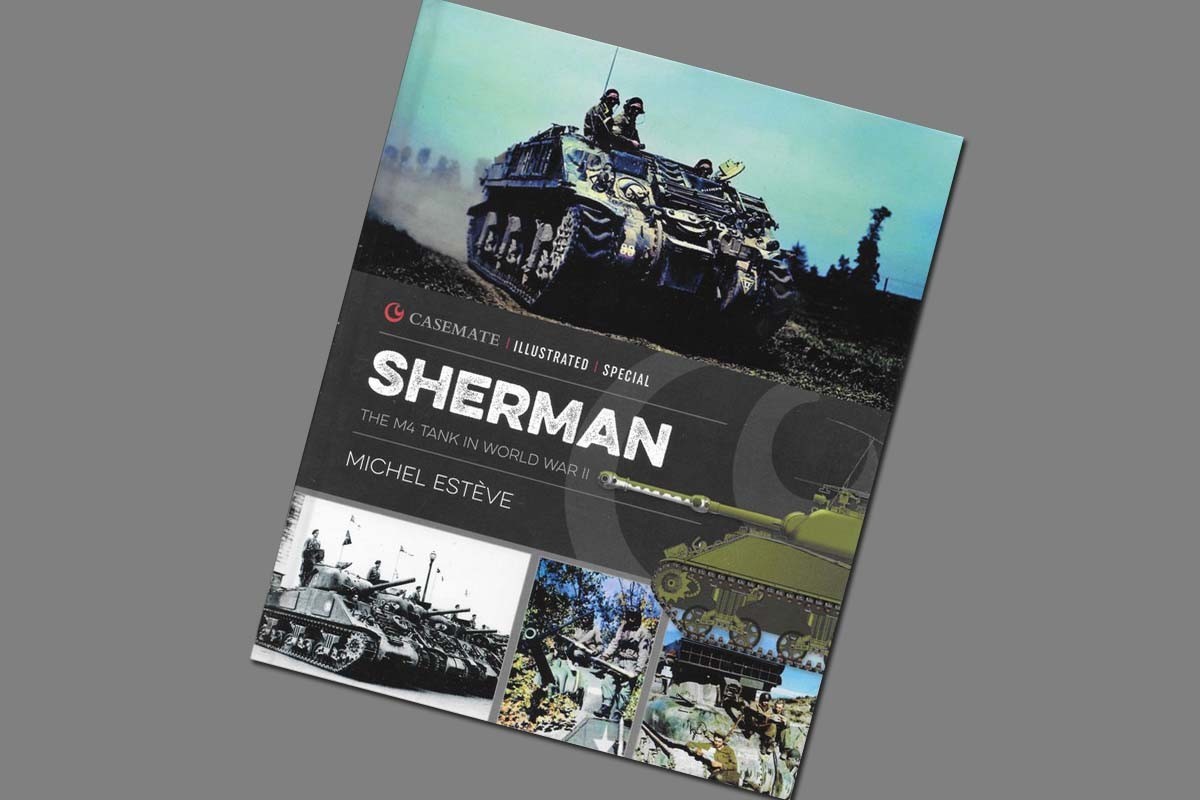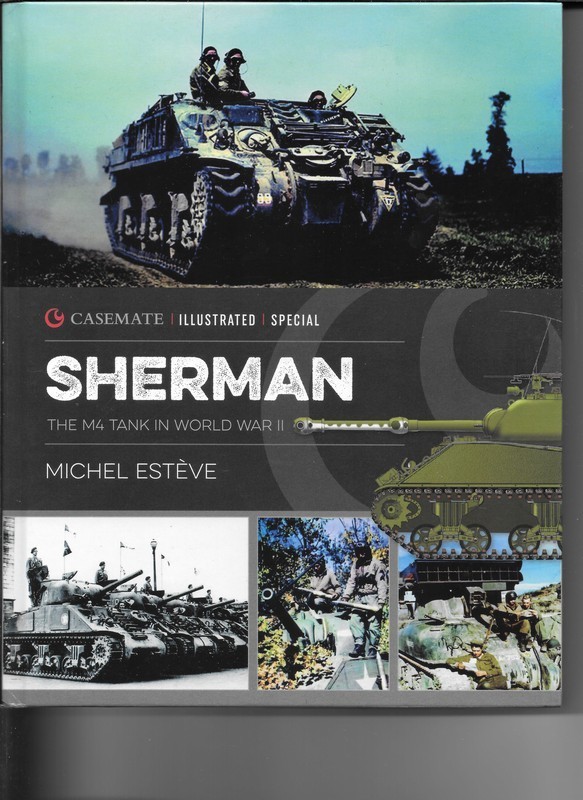
Brief History
The M4 Sherman, officially Medium Tank, M4, was the most widely used medium tank by the United States and Western Allies inWorld War II. The M4 Sherman proved to be reliable, relatively cheap to produce, and available in great numbers. It was also the basis of several successful tank destroyers, such as the M10, 17pdr SP Achilles and M36. Tens of thousands were distributed through the Lend-Lease program to the British Commonwealth and the Soviet Union. The tank was named by the British for the American Civil War general William Tecumseh Sherman.
When the M4 tank went into combat in North Africa with the British Army at the Second Battle of El Alamein in late 1942, it increased the advantage of allied armour over Axis armour and was superior to the lighter German and Italian tank designs. For this reason, the US Army believed that the M4 would be adequate to win the war, and relatively little pressure was initially exerted for further tank development. Logistical and transport restrictions, such as limitations imposed by roads, ports, and bridges, also complicated the introduction of a more capable but heavier tank. Tank destroyer battalions using vehicles built on the M4 hull and chassis, but with open-topped turrets and more potent high-velocity guns, also entered widespread use in the Allied armies. Even by 1944, most M4 Sherman’s kept their dual-purpose 75 mm gun. By then, the M4 was inferior in firepower and armour to increasing numbers of Germany heavy tanks but was able to fight on with the help of considerable numerical superiority, greater mechanical reliability, better logistical support, and support from growing numbers of fighter-bombers and artillery pieces. Some Sherman’s were produced with a more capable gun, the 76 mm gun M1, or refitted with a 76.2mm calibre Ordnance QF 17-pounder gun by the British (the Sherman Firefly).
The relative ease of production allowed large numbers of the M4 to be manufactured, and significant investment in tank recovery and repair units allowed disabled vehicles to be repaired and returned to service quickly. These factors combined to give the Allies numerical superiority in most battles, and many infantry divisions were provided with M4s and tank destroyers.
After World War II, the Sherman, particularly the many improved and upgraded versions, continued to see combat service in many conflicts around the world, including the UN forces in the Korean War, with Israel in the Arab–Israeli wars, briefly with South Vietnam in the Vietnam War, and on both sides of the Indo-Pakistani War of 1965.
Contents
Publisher Casemate UK
This is the second book from the series Casemate Illustrated Special that I have had the privilege to review. This hardback book on the Sherman, the M4 inWorld War 2 has a glued spine with pagination of 240
The Author Michel Esteve Born 6th of April 1933, Michel served 21 years in the Armoured Cavalry Arm, and often used, adopted, and repaired many variants of the M4 in service of the French Army.
forward
1. A tank named Sherman.
2. Production.
3. The Chassis.
4. Turrets.
5. Armament and Ammunition.
6. The Sherman Crew.
7. Evolution of the Sherman.
8. The Sherman family.
9. Logistics, Supply, and Backup.
10. Numbering and Markings.
11. Unit Composition and Organisation.
12. The success of the Sherman.
13. The Sherman since 1945.
Appendix 1
Military operations-ETO
Glossary and abbreviations
Sources and bibliography
A tank named Sherman is the starting chapter of this book and goes through some of the histories of the Sherman and the countries that used this tank during World War Two and beyond.
There are lots of colour plates showing you the difference between the Sherman’s which is extremely helpful in distinguishing them in the pictures, as this book contains Sherman's in battle. Something that I personally have never seen in a modelling type book like this one is a cross-section profile of the Sherman M4 with a key leading to all individual parts that have been numbered and listed.
Another fine chapter in this book is the Sherman crew where it goes on to explain their positions, their jobs, their rank, and positions within the Sherman so in the turret on the left-hand side there was the radio operator loader or cannoneer. Whose job as the name suggests, was to supply ammunition for the cannon and the coaxial machine gun to get rid of the spent cartridges as in when needed and to set off the smoke grenade launcher. To these tasks was added the use of the radio set or sets depending on whether it was a normal tank or a command tank.
On the right-hand side of the cannon was the gunner. His seat was placed at the bottom of the turret well and he had the pointing elevation /bearing and firing controls near him. The firing controls were by the Gunners left foot they were electric he opened fire with the cannon or the coaxial machine gun as the situation dictated. The coaxial machine gun could also be fired from the hydraulic turret controls he got into the turret second by using the commanders hatch too.
The post of the tank commander was still on the same side but slightly above the gunner. He had several periscope's for all-round vision or one swivelling Periscope mounted on the half hatch the turret controls a firing system and an interphone and radio communications he could also use the AA machine gun, looking after and checking the cannon was everybody's job.
Inside the Hull, the driver sat on the left-hand side on an adjustable seat enabling to drive with closed hatches using the driving Periscope or vision slots. The starting, driving, and steering systems were all set out around the seat. The drivers hatch closed using a pivoting shutter on a hinge with two springs the shutter had a system to lock it open. Apart from driving the tank, the driver was tasked with looking after the engine and the hull he was helped in this by the bow gunner whose task compromised checking all levels and refills for the engine, gearbox and reduction gear, air filters and radiators on the M4 AI the cooling circuit contained 129 litres of water or anti-freeze and the engine 30 litres of oil with different viscosities depending on the ambient temperatures not to mention the running gear and the outside accessories. Behind the bow Gunners seat, at the bottom of the hull was an escape manhole cover
The bow gunner / to the assistant driver was on the front right-hand side and his hatch and seat were identical to the drivers. He had acquired the certificates enable him to replace the driver if needed and he was tasked with the tanks close defence since he had a machine gun mounted on the bow of the tank. He and the driver were also tasked with checking the Hull and its maintenance.
Throughout this book, there is a wealth of fascinating pictures, facts and equipment including the driver’s dashboard all reproduced with a key to tell you all the different functions, buttons, and dials.
Cutaway hull pictures off where the ammunition was stowed shows you just how intricate and claustrophobic it was inside a Sherman. Let alone the danger of the munitions stowed to close to all of the Sherman's crew.
The Sherman's evolution was quite phenomenal the number of times it was changed and improved not just by the US army but also by other nations that used this well-known tank was incredible. From the basic M4 Sherman evolved The M4-75, the M4 105 howitzer, M5-105 HVSS with M-10 ammo trailer, M4A1 75, M4 hybrid, M4A275, M4A2 76, M4A3 75 wet, M4A3 E8, M4A3 E2, M4A4, M4A4 Firefly, M4A5 Grizzly, TDM36 B2, TD M 10 Wolverine, M32 B3 TRV, M 74 ARV. To name but a few we also had artillery on M4 chassis’
Conclusion
Dare I say it this book to me is an incredible reference source on all the Sherman’s and M4 chassis vehicles. This book has been professionally written by author Michel Esteve and published by Casemate UK who have finished it off with the good quality glossy paper. The amount of information in the book really is mind-boggling yet easy to read so many pictures showing all kinds of different aspects like walkaround pictures cross-section profiles, coloured drawn pictures showing the different hulls of the M4.
Towards the end of this book comes a section which I personally found extremely useful the numbering and markings these distinguished not just the countries but the individual units but took these tanks into battle. Particularly interesting to this section for me was the British markings and units like the 1st British armoured division with its division badge rhino, 2nd British Armoured Division with its Knight Helmet, 5th British Armoured Division with its Iron Gauntlet, 7thBritish armoured division the Desert Rats, 8th British Armoured Division GO, Guard Armoured Division to name but a few. This followed on with the number’s flags and markings of the Canadian armoured divisions and then the French Armoured Division.
From start to finish this really is an incredibly planned and written book this is a book that I would recommend for any armoured modellers as well as anyone with an interest in the Sherman tank itself I really do not think you will be disappointed.
Close up images of the Sherman useful for making it more realistic model of the Sherman tank

Images showing how some of the Shermans were fitted with sandbags, concrete and logs


US Tank battilions
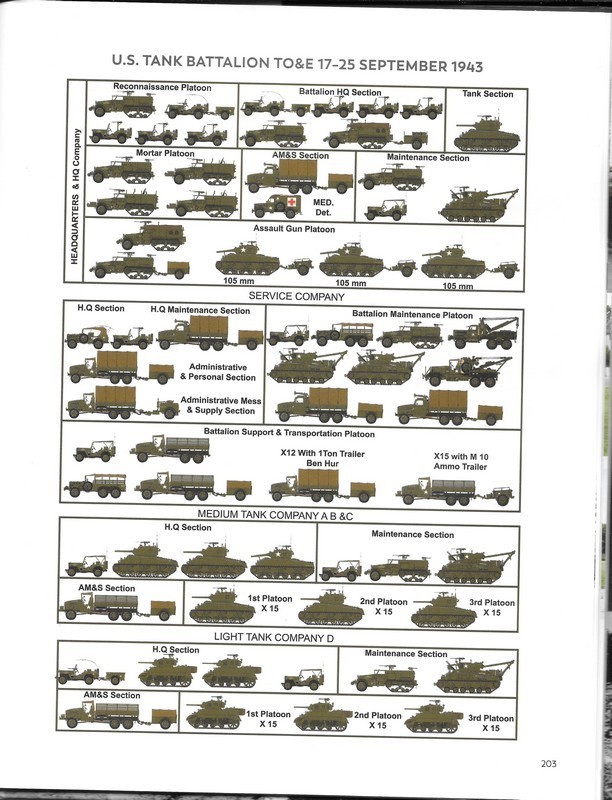
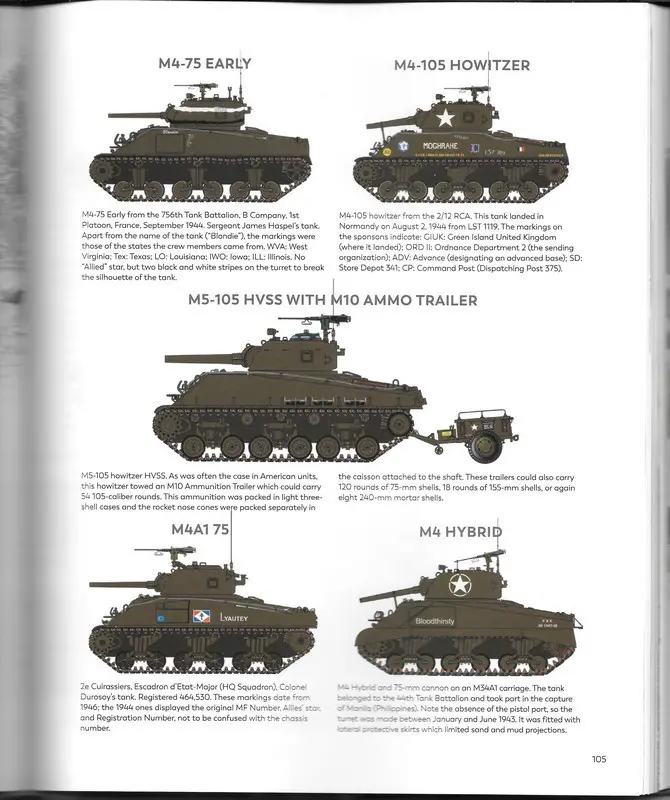
Going swimming

